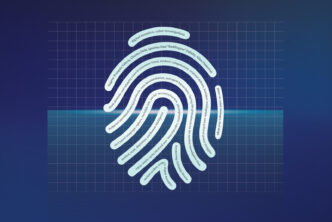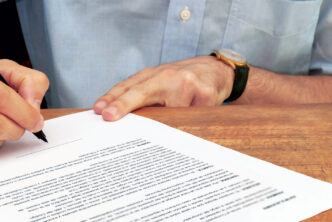by Michael R. Depew, Accident Reconstructionist
Whether you have been an investigator for twenty years or you are just starting out, there’s a good chance that you will encounter a car accident investigation. It might even be a friend or family member who was involved in an auto accident and is now facing a lawsuit or insurance dispute or both. If you find yourself in this situation, it is important to keep in mind that these cases must be handled in a specific way in order to best preserve evidence and protect your client.
It’s not as simple as reading the DPS report and taking it as “fact.” Often there are crucial evidentiary pieces that get overlooked, destroyed or neglected. Without knowing how to properly preserve a scene, or understanding what to look for, you could easily cause more harm than good and find yourself out of your depth of experience.
In my 36 years as an accident investigator and reconstructionist, I’ve specialized in working alongside plaintiffs’ attorneys, defense attorneys, trucking companies, and families of individuals involved in fatal auto accidents. They all want the same thing: the truth. Finding out what happened and how it happened is my job. I’m writing this article for other investigators who are interested in the pursuit of truth so that you can approach your next auto accident case with a clear framework to help piece together the fragments and tell the story.
Understanding the Scene
The very first step in your auto accident investigation, as with any other investigation, is to speak with the client. Unfortunately, this is rarely where reliable, factual evidence will be found. Accidents happen quickly, and human recall and perception at high rates of speed is incredibly unreliable. Of course, you still want to speak with the client to get their perspective and any information they can offer, but it is imperative that you visit the scene of the accident as quickly as possible after the accident has occurred.
At the scene, take pictures. Anything you see is potentially probative evidence. In particular, look for debris, tire/skid marks, damaged road signs or railings etc. Your job is to gather puzzle pieces. Make careful documentation. As you survey the area, meticulously record your observations, and capture the layout of the scene, the positions of vehicles, and the presence of any debris. Note the orientation of the vehicles. Are there any signs of impact such as crumpled hoods, broken headlights, or tire marks? Every detail, no matter how seemingly insignificant, could hold a vital clue in reconstructing the accident.
Pay close attention to tire tracks, skid marks, and any visible damage. Note the length and depth of the tire marks and any distinctive patterns. These markings can provide crucial insights into the vehicle’s speed, braking distance, and direction of travel.
Debris could include pieces of broken glass, plastic fragments, tire rubber, or even clothing. Each piece of debris offers a fragment of the puzzle, potentially revealing the impact zone, the sequence of events, or even the identity of a vehicle involved.
Note the condition of the road surface, as this also plays a significant role in understanding the dynamics of the accident. Pay attention to the surface type, whether it’s asphalt, concrete, gravel, or dirt. You also check for any irregularities, such as potholes, uneven surfaces, or debris. These factors can influence vehicle handling, braking, and the overall dynamics of the collision.
Conducting Witness Interviews
“But Mike—you said witnesses are unreliable.” Well, yes. And no.
While the scene tells the most reliable story, there are still valuable perspectives to be gleaned from eyewitness statements. Your job is to gather all the information and perspectives from anyone involved. Sometimes witness accounts differ entirely. Other times, witnesses are able to offer only part of the story while other witnesses can offer complementary pieces that corroborate it. This is partially due to the speed at which most accidents occur and the resulting trauma that colors the event.
In the initial stages, it is important to remain objective when interviewing witnesses and resist any tendency toward confirmation bias. Approach witness interviews with a critical eye, recognizing the potential for memory distortions, biases, or even deliberate misrepresentations. Always introduce yourself to witnesses, creating a rapport that fosters trust and open communication, and ask open-ended questions, encouraging them to recount their observations in their own words, avoiding leading questions that could influence their responses.
Examples of open-ended questions for witnesses include:
“Can you please describe what you saw just before the accident occurred?”
“What were you doing at the time of the accident?”
“How did the vehicles involved in the accident appear to be moving?”
“What did you observe about the conditions of the road and weather?”
By asking open-ended questions, you’re giving the witness the freedom to recount their story in their own words, minimizing the risk of introducing biases or influencing their recollections.
Document everything. Record it if possible, with permission of course. Maintaining detailed notes, capturing the verbatim statements, any hesitations or inconsistencies, and any emotional responses can be valuable as you consider other evidence in conjunction with the testimony.
By meticulously collecting, documenting, and analyzing evidence, you create a comprehensive picture of the accident. This meticulous approach forms the foundation for your investigation, laying the groundwork for uncovering the truth and determining liability.
Your task is to decipher the clues, to unravel the dynamics of the collision, and to coalesce a compelling story based on the evidence you have gathered.

(story continues)
Analyzing Physical Evidence
The first step in analyzing the physical evidence of a car accident is a comprehensive assessment of vehicle damage. This involves meticulously examining the collision points, deformation patterns, and the overall extent of damage to each vehicle involved. Every dent, scratch, and tear tells a story, providing valuable clues about the forces at play during the collision.
The thorough examination of vehicle damage is a critical aspect of any accident reconstruction. It allows you to determine the nature and severity of the collision, the sequence of events, and even the potential speed of the vehicles involved. By studying the damage patterns, impact points, and deformation, you can piece together a detailed picture of what happened.
So, what types of damage should you look for? There are several types, but for purposes of this article, let’s focus on just a few main ones.
Impact Points: These are the areas of the vehicle where the initial contact with another vehicle, object, or surface occurred. They are often characterized by dents, creases, or punctures. The impact points on a vehicle can provide insight into the dynamics of the collision. For example, a front-end impact with significant deformation to the front bumper and grill suggests a head-on collision, while a side impact with damage to the driver’s side door might indicate a T-bone collision.
By examining the impact points, investigators can often determine the direction of the impact, the point of initial contact, and the relative positions of the vehicles involved. This is called PDOF— Principle Direction of Force—but this is a topic for another day.
Deformation: This refers to the bending, twisting, or crushing of the vehicle’s structure due to the impact forces. Deformation patterns can indicate the direction of the impact, the severity of the collision, and the points of contact. Deformation patterns are another indicator of the severity and nature of the crash. The way a vehicle deforms can reveal the direction of the impact, the force applied, and the areas of contact. A crushed front end indicates a high-impact collision, while a bent fender might suggest a glancing blow.
Fractures: These are breaks or cracks in the vehicle’s frame, body panels, or other structural components. They suggest significant impact forces and can provide clues about the forces involved. Fractures in the vehicle’s frame, body panels, or other structural components can reveal information about the impact forces. A fractured frame can indicate a significant impact that exceeds the structural integrity of the vehicle. By analyzing the location and severity of fractures, investigators can gain insights into the direction and magnitude of the forces involved.
Scratches and Abrasions: These can indicate sliding contact or dragging, providing information about the sequence of events and the relative motion of the vehicles. Examining scratches and abrasions on the vehicle’s surface can be useful in understanding the sequence of events. Scratches on the side of a vehicle, for example, might indicate that the vehicle was struck from the side and then slid along the surface. The direction and depth of the scratches can provide valuable information about the nature of the contact and the relative motion of the vehicles.
Tire Marks and Skid Marks: These can reveal the direction of travel, braking distances, and the speed of the vehicles involved. Skid mark analysis involves more than just measuring the length of the marks. Investigators carefully examine the patterns and characteristics of the marks to gain a complete understanding of the vehicle’s movements.
Straight skid, curved skid, yaw marks, scuff marks and tire tracks all have different implications and formulas we use in the field. Don’t worry too much about this, just take good photos and then call me!
Final Thoughts
A thorough understanding of the scene, collecting witness statements, and examining vehicle damage are essential elements for any accident investigation. This includes detailed photographs and measurements of the scene, documentation of the witness statements, and collection of damage details to all vehicles involved, as well as written descriptions of the deformation patterns, impact points, and other observed features. A comprehensive report can be compiled from the data and used in legal proceedings or for future reference.
It is important to handle these types of investigations with an eye toward detail, patience, and passion for uncovering the truth. The layers of evidence, both scientific and circumstantial, can sometimes take months to fully evaluate in order to determine what really happened. But despite the sometimes-overwhelming aspects of this field of investigation, it remains one of the most rewarding.
About the Author
Michael R. Depew is a forensic engineer and accident reconstructionist with TCS Consulting in Houston, Texas. He has over 36 years of experience in accident reconstruction, forensic testing, and expert consultation. As a licensed private investigator in Texas, Louisiana, and other states, Mr. Depew has presented at conferences and continues to follow his passion for writing in his profession to help others learn.
We’re always listening. Send your story submission/idea to the Editor: kendra@orep.org.





